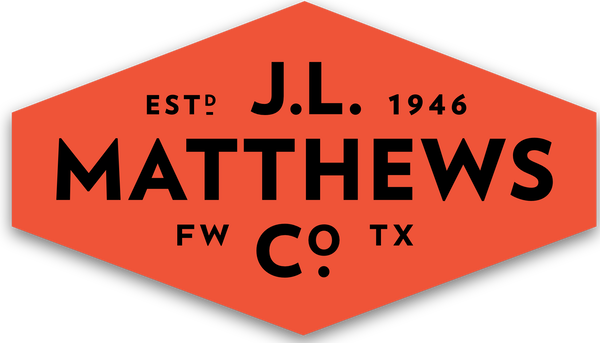
All You Need to Know About Ironworker and Lineman Boots
Finding the ideal size is crucial for comfort, support, and overall functionality when choosing a pair of boots. The right boot size can make a significant difference in how you feel throughout the day. In this article we will guide you through the important factors to consider when figuring out your boot size, including hand size correlation with foot, width, toe cap, boot height and the difference between lineman's boots and ironworker’s boots.
Determining Boot Size
You can certainly measure your foot to figure out your boot size. Another good rule of thumb for deciding boot size is to compare it to the size of your hand or size of your rubber gloves. Measure around the palm of your dominant hand, just below the knuckles, to obtain an idea of your hand size. Often, the size of your hand corresponds to the size of your foot. For example, if you have a nine and a half hand, you probably have a nine and a half foot as well. Keep in mind that this may not be true in all circumstances, but it is an excellent starting point or a helpful guideline.
Considering Shoe Width: A Key Factor
In addition to length, shoe breadth is important in creating a good fit. Work boots are available in a variety of widths, marked by letters such as C, D, E, or EE. Boots in C, D, and E widths are available from Wesco Boots. Hoffman boots come in D or EE widths. Most people's standard width is "D." To guarantee a comfortable fit and overall pleasure, consider the width of your foot while picking the proper boot size.
Toe Cap Variations: Steel Toe or Composite Toe?
Another factor to consider while deciding on a boot size is the toe cap. Work boots can feature different toe cap options, such as steel toe or composite toe. Furthermore, some boots have narrow toes while others have wider toes. If you choose boots with wide toes, it is best to size them down half a size. Boots with narrow toes, on the other hand, fit true to size. For example, if you normally wear a size nine and a half, you should go with a size nine for wide toe boots. Due to their larger toe caps, Hoffman boots often run half a size larger, but Wesco Boots and Thorogood boots typically match the exact size.
Boot Heights: Finding the Right Length
Work boots are available in a variety of heights, such as 16 inches and 8 inches. Iron workers' boots are distinguished by their wedge soles, which provide stability and traction, whereas lineman's boots have a nicely defined heel. Lineman boots are specifically built for climbing and have metal shanks for added stability. Climbing in non-lineman footwear can be dangerous and difficult. Although some people continue to attempt it, it can cause discomfort and even accidents.
The Difference Between Lineman's and Ironworker's Boots:
Lineman's boots and ironworker's boots perform distinct functions. Lineman's boots are designed specifically for climbing and have additional safety measures such as a defined heel and metal shanks. These boots give climbers the required support and protection, making them indispensable to their vocation. Ironworkers' boots, on the other hand, often have a wedge sole, which caters to the special needs of ironworkers who require stability and traction on metal constructions. Both styles of boots are intended to meet the specific needs of their respective occupations.
Consider hand size, width, toe cap, and height when determining the proper boot size. Remember that everyone's feet are different, so try on several sizes and styles to get the perfect fit. When it comes to climbing, don't skimp on safety; invest in good lineman's boots for increased protection. Now that you understand boot sizing, you can boldly embark on your next excursion in comfort and style!
FAQs:
Q: How do I measure my hand size accurately?
A: Wrap a measuring tape around the palm of your dominant hand, just below the knuckles, and take note of the measurement.
Q: Are boots available in different widths?
A: Yes, work boots frequently come in many width sizes to accommodate varied foot widths or functionality. It is critical to follow the manufacturer's exact sizing requirements.
Q: Can I use lineman's boots for purposes other than climbing?
A: Lineman's boots are specifically designed for climbing tasks and are not recommended for general use. They may lack the comfort and support required for everyday wear, however.
Q: Are ironworker’s boots suitable for climbing?
A: Ironworker’s boots are not specifically designed for climbing. They prioritize stability and traction on metal structures, making them more suitable for ironworking tasks.
Q: How often should I replace my boots?
A: The lifespan of boots varies depending on factors such as frequency of use, conditions, and maintenance. Generally, it's advisable to replace boots when they show significant signs of wear or when they no longer provide adequate support and protection.
We hope this article has provided you with valuable insights into finding the right boot size. Keep in mind that a perfect fit is critical for both comfort and safety. So, measure your foot size, evaluate the width and toe cap, and choose the suitable height to get the most out of your boots. Take a bold step into your future journey!
Get help with your boots from J.L. Matthews
At J.L. Matthews, we carry various brands of boots including Wesco, Hoffman, and Thorogood. We are happy to help get you sorted with a new pair of boots at our store. If you’re buying online, give us a call (800-421-3360) and we’ll try our best to help find a good fit for you. Along with boots, we also carry many other products such as Lineman Tools, Arborist Tools, Lineman Climbing Gear and so much more.
